- Discover Episcopal
- Admission
- Our Program
- Athletics
- Arts
- Spirituality
- Student Life
- Support Episcopal
- Alumni
- Parent Support
- Knightly News
- Contact Us
- Calendar
- School Store
- Lunch Menu
- Summer Camps
« Back
A Bold New Venture
October 4th, 2019
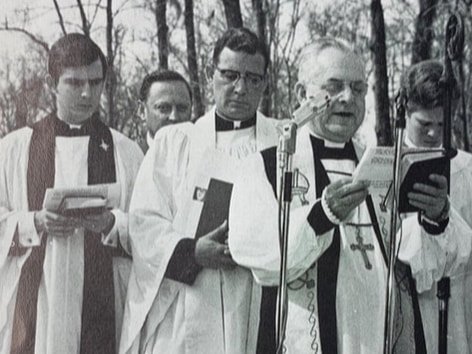
10:16 am April 27, 1964 Episcopal School of Baton Rouge is officially established with the filing of a charter in the secretary of state’s office. According to “A Dream Come True: The History of Episcopal High School of Baton Rouge” by Carroll Erwin Brown the hard work had only just begun on what Rev. Ralph Webster called a “bold new venture.” Reading the account, you certainly feel like the venture was bold as the current location of the school that so many know and love was initially a large, rural tract of land where deer roamed and hunters followed. However, there was ambition and determination among those with the |
dream and they would not be deterred. The group hired A. Hays Town to design the master plan for the campus and groundbreaking ceremonies were held. Once the process was underway, progress moved quickly with the building of Perkins Hall, a cafeteria-auditorium and plans for a Chapel.
September 22, 1968
More than 260 students attended fifth through eleventh grades at the new Episcopal campus.
Spring 1970
The first Episcopal graduating class completed their term. Mary Jeanne Higgs was the first valedictorian and Mary Kay Guidry was the salutatorian. Marlene Chaudoir was the first to receive an Episcopal High School diploma.
September 22, 1968
More than 260 students attended fifth through eleventh grades at the new Episcopal campus.
Spring 1970
The first Episcopal graduating class completed their term. Mary Jeanne Higgs was the first valedictorian and Mary Kay Guidry was the salutatorian. Marlene Chaudoir was the first to receive an Episcopal High School diploma.
With the first graduating class moving on, school organizers were focused on growing the school. According to Brown’s account, by the fall of 1970 “a boys’ gymnasium and a middle school building were completed” and the Chapel was under construction. In the early ‘70’s, Aldrich Library was dedicated and the original Middle School building was designated as Penniman Hall. Expansion and growth continued and in the fall of 1985, Foster Hall was complete, adding space for science learning.
Expansion on Episcopal’s campus continued with the Lower School building in the late 80’s, Frazer Hall in 1995 and the current Middle School building in 1998. The 2000’s began with the opening of the Visual and Performing Arts Center. However, the school’s growth was not without obstacles. Throughout its history, the school community has united in moments of hardship. School leaders have remained true to the original vision, providing the needed leadership to overcome challenges.
Expansion on Episcopal’s campus continued with the Lower School building in the late 80’s, Frazer Hall in 1995 and the current Middle School building in 1998. The 2000’s began with the opening of the Visual and Performing Arts Center. However, the school’s growth was not without obstacles. Throughout its history, the school community has united in moments of hardship. School leaders have remained true to the original vision, providing the needed leadership to overcome challenges.
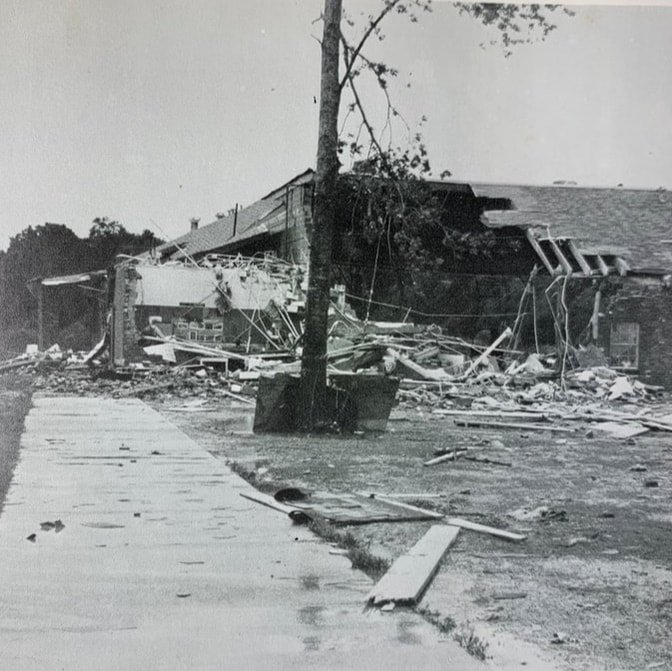 UKnighted Against the Elements
UKnighted Against the Elements
Hurricanes. Tornadoes. Fires. Floods. Over the course of the last five decades, Episcopal has successfully faced the elements. In September of 1971, Hurricane Edith hit Baton Rouge, spawning a tornado that destroyed the gym and damaged the Middle School building and Perkins Hall. Brown reports that, “When the twister hit Perkins Hall, it ripped off the roof, carried away most of the books in the third floor library, and left the third floor stairs hanging on either end of the building.” Years later in April of 1991, sixty-foot flames were seen coming from the roof of Perkins Hall. |
According to the historical account, “11 classrooms, the business office, the headmaster’s office, reception area, upper school office, NJROTC and art rooms, all had to be relocated” while reconstruction was underway. Who could forget, more recently, in August 2016 Episcopal faced the flood that impacted so many in the area. The main gym, Phillips gym, Lower School, Penniman Hall, courts and fields were damaged. Countless families, faculty and staff were personally impacted. However, winds, fire and flood could not dampen the spirit of the Episcopal community. After each obstacle faced, the community rebuilt, repaired and recovered.
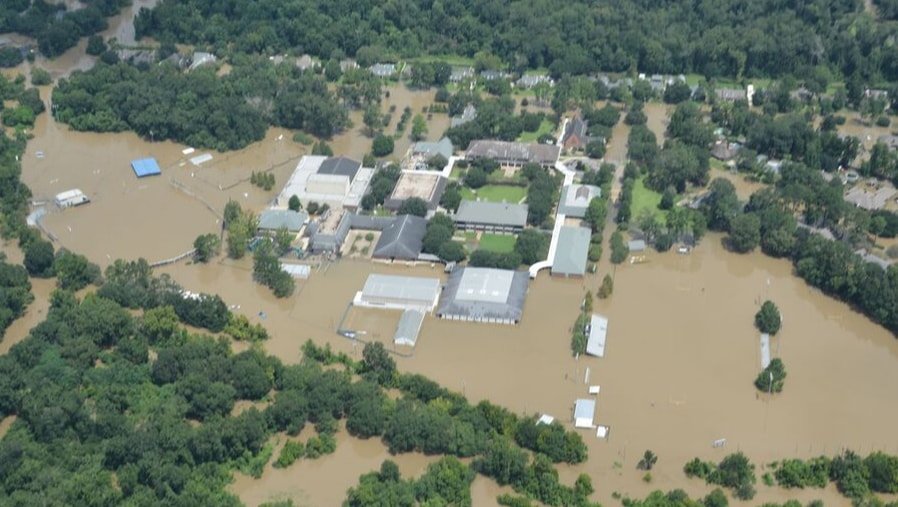
Academic Accolades
According to Carroll Brown’s account of the school, “Episcopal High School very early gained a reputation for academic endeavor that continues to the present.” In April of 1972, the Episcopal chapter of the National Honor Society was established. In 1977, Bruce Ray and Mark Townsend earned National Merit finalist status. By 1984, Episcopal students were reported to have applied to 58 different colleges. More recently, the community celebrated eleven National Merit Semifinalists and three Commended Scholars among the Class of 2020. In addition, members of the Class of 2019 are now studying at a range of universities, including highly selective schools and schools with a Louisiana legacy.
Early on, the recognition also came in from external sources. Episcopal was named an Exemplary School by the U.S. Department of Education in 1987. Fr. Hancock joined officials from 271 other exemplary schools in a ceremony at the White House in October of that year. Episcopal would again earn the designation of Exemplary School in 1991. In addition, Episcopal was named an Honor School by the Chief of Naval Education and Training in 1990 and 1994.
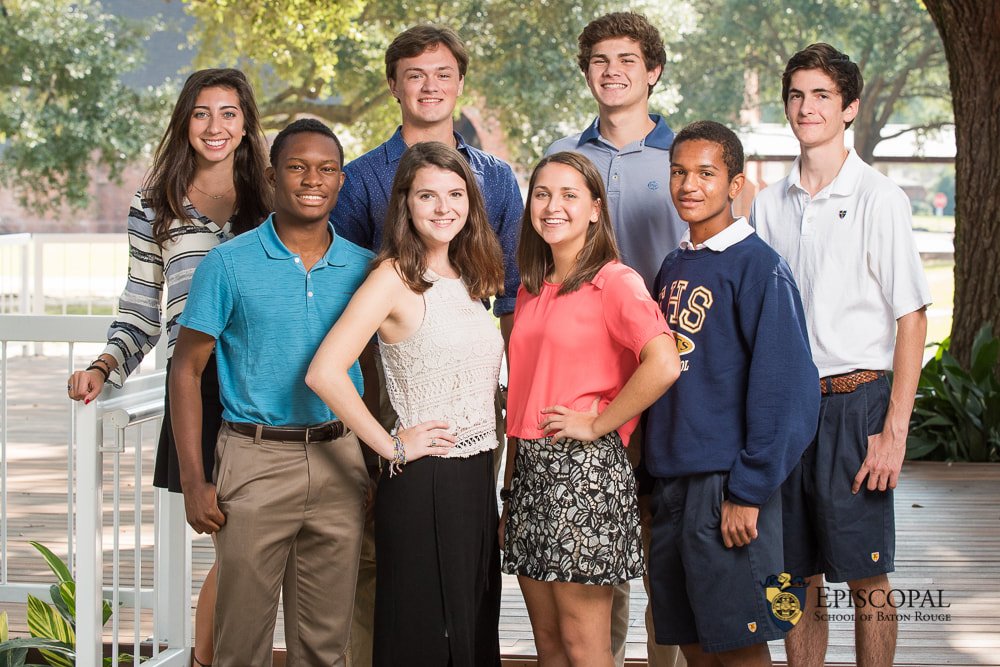
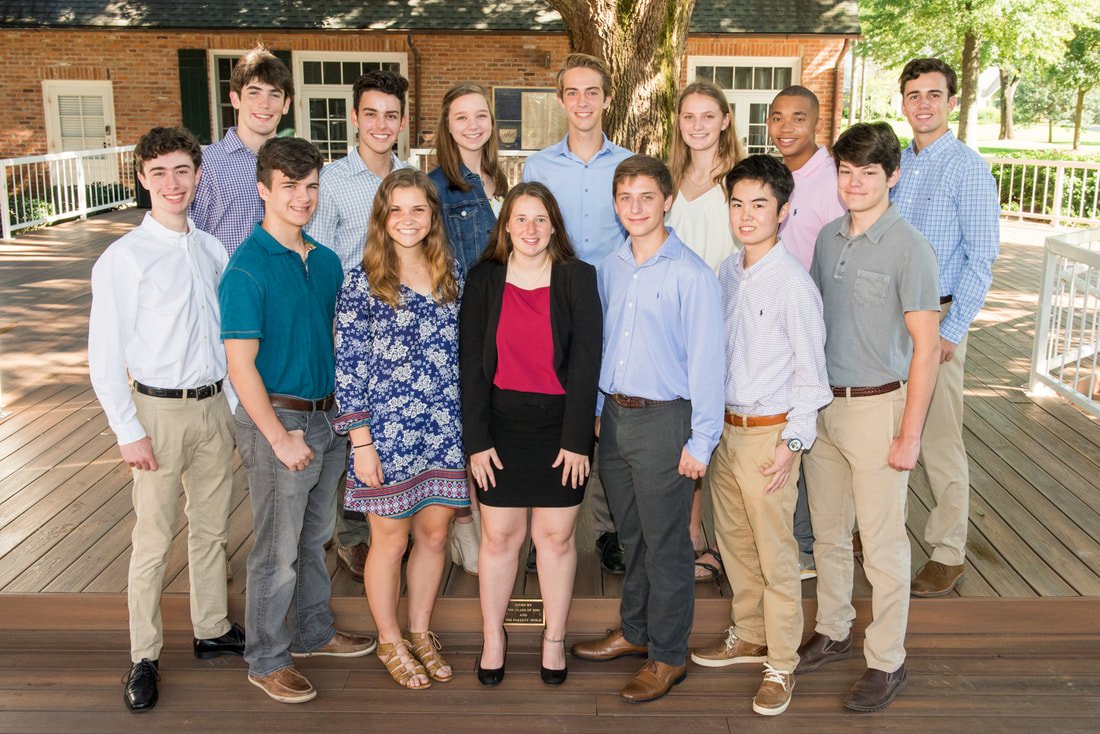
The commitment to academic rigor continues to be a hallmark of the Episcopal experience today. During Head of School Hugh M. McIntosh’s tenure, Episcopal students have consistently raised the academic bar. Students are returning to campus post-graduation to report that the school prepared them exceptionally well for their college studies. They feel equipped and inspired to take on the role of leader and make a difference in the world.
Growth for the Next Generation
Carroll Brown’s historic account of Episcopal’s story begins with the school’s groundbreaking on a rural tract of land and follows the process of creating a new school, maintaining that new school and adjusting to progress and advancement. Brown ends his account with an epilogue entitled “Count Your Blessings.” In it, he highlights the computer problem that was predicted when the year moved from 1999 to 2000. “However, at Episcopal there was no real concern,” Brown writes. “Confidence in God-given human intelligence was high. It was just another technological challenge to be met.” Brown attributed that confidence to Episcopal’s assets, which at the time included “beautiful facilities, able students, an excellent faculty, forward looking administrators, dedicated parents, generous benefactors, and a solid reputation.” Now, in 2019 those assets remain as the school expands to meet the needs of the next generation of leaders.
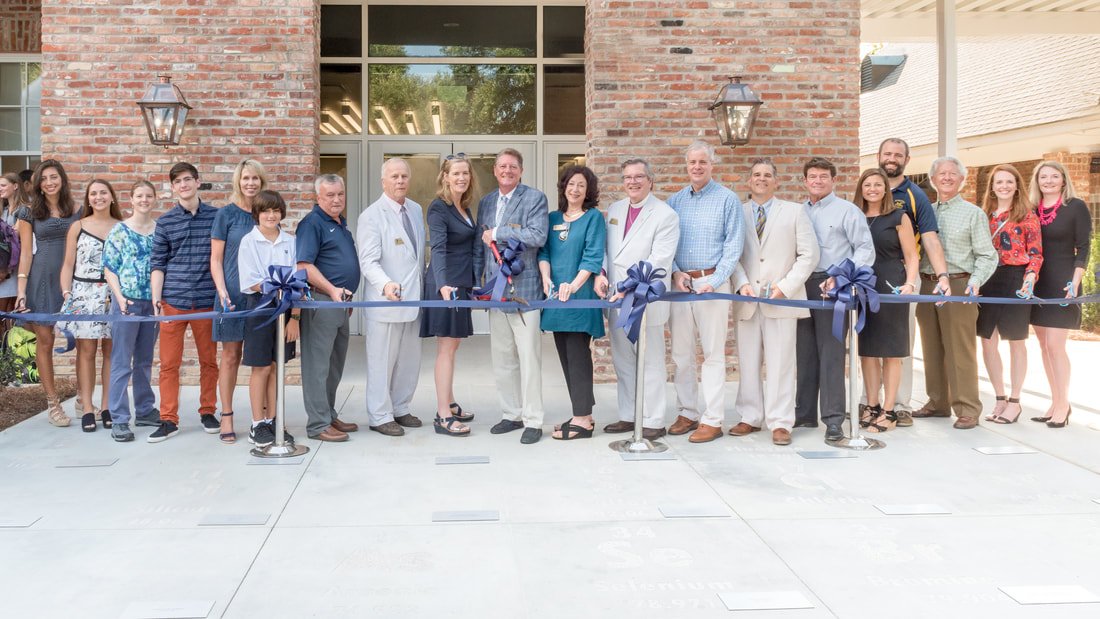
May 2017
The Episcopal community celebrated the groundbreaking of the first new academic building on campus in over a decade. The Academic Commons houses 17 classrooms, lab and project space, an engineering and robotics suite and an entrepreneurial studies center. In addition, the entrance of the facility showcases a courtyard-size periodic table. “This building is part of the Episcopal School of Baton Rouge dream,” said Head of School Hugh McIntosh during the ribbon cutting ceremony in August 2018. He added that the dream is to provide students with a nationally competitive education led by great teachers in modern facilities, preparing them to be productive, adult citizens of Baton Rouge.
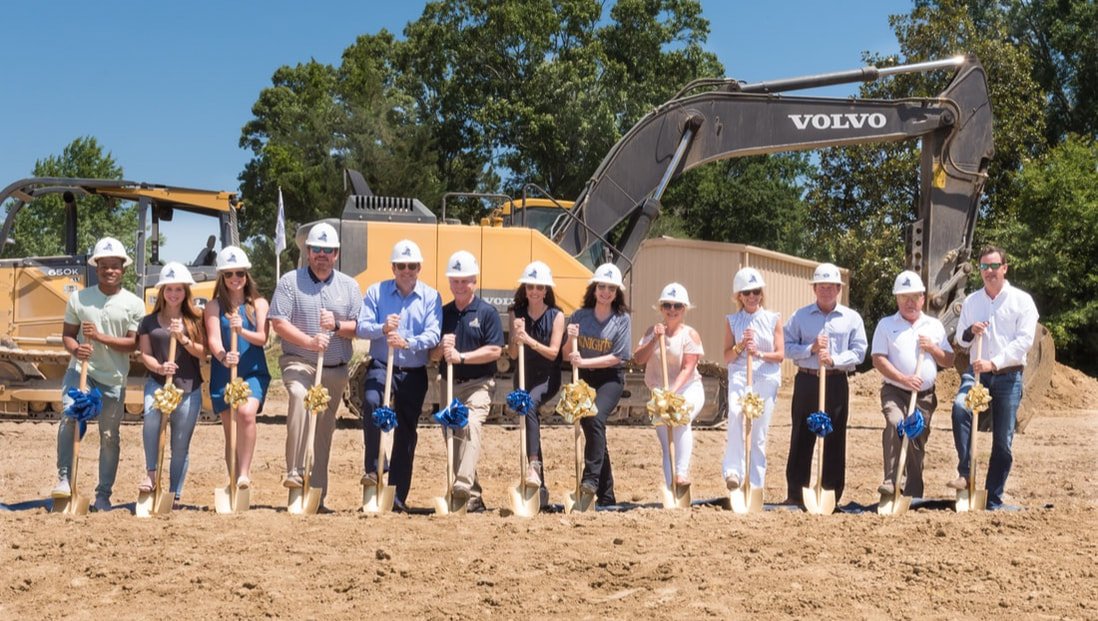
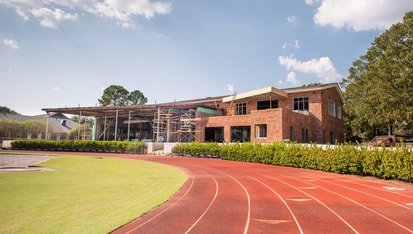
May 2018
With shovels in hand, Episcopal leaders and athletic team members broke ground on the new Episcopal athletic field house. The facility is the first new athletic building on campus since the 1980’s. The multi-use facility will be used by all students in all divisions for physical education classes, strength training and interscholastic sports. Episcopal has had a tremendous athletic program since the day when Adrian Wilcombe scored the first Knights touchdown in school history in a win over River Oaks Academy. The field house will be a reminder of the championships and success stories since those early days.

Spring 2019
Episcopal leaders announced the intention to create the Episcopal Quest Center within a renovated Foster Hall. The center will once again bring the building to life with the joy and enthusiasm of students learning. Fundraising and planning efforts are underway now to make this dream a reality.
Fall 2019
A new Episcopal Head of School will be announced after a nationwide search. The new head will join the list of previous school leaders which include Rev. Ralph Webster, Rev. Paul Hancock, Kay Betts and Hugh M. McIntosh. Under McIntosh’s leadership, Episcopal students have excelled. Students conduct university-level research in the ESTAAR program, they travel to countries across the globe for cultural exchanges and they are recognized locally and nationally for academic excellence. Students are exploring their interests and participating in athletics with the opportunity to play and achieve, thanks to the school’s carefully planned enrollment. They are developing empathy and learning to express themselves creatively through a range of artistic opportunities provided by a robust arts department. The campus is a place for all faiths and all backgrounds. The faculty is experienced, qualified and ready for the next 50 years.
Episcopal’s story is still being written. What began as the dream of a determined group has flourished under the steadfast guidance of the current Head of School. Now you can help us write this next chapter by telling others about the Episcopal experience or even by reserving a naming opportunity. Now is the time to be a part of the Episcopal story as we look toward the next 50 years of preparing the next generation of leaders for lives of purpose and meaning. We hope you will join us.
What's in a Name?
Aldrich Library – named for Ella Lanier Aldrich, the mother of Ella V. Schwing who donated the funds for the library.
Foster Hall – named for Willie Palfrey Foster, grandmother to the Bailey family who contributed funds to support construction of the Upper School science building.
Frazer Hall – named for Thomas and Lynnette Frazer, longtime Episcopal supporters.
Lewis Family Memorial Chapel of the Good Shepherd - named for A.C. Lewis, Jr.
Penniman Hall (originally the Middle School building) – named for Mary Virginia Crain Penniman, the former wife of 1969 -1975 board president G. Allen Penniman, Jr.
Perkins Hall – named for Paul Perkins who donated property to the school which allowed the retirement of debt on the main building.
Phillips Gym - named in memory of Annslee Laura Phillips.
Webster Refectory – named for the school’s first Head of School, Fr. Webster. At the same time that the building was named in his honor, Fr. Webster was also named Headmaster Emeritus.
Foster Hall – named for Willie Palfrey Foster, grandmother to the Bailey family who contributed funds to support construction of the Upper School science building.
Frazer Hall – named for Thomas and Lynnette Frazer, longtime Episcopal supporters.
Lewis Family Memorial Chapel of the Good Shepherd - named for A.C. Lewis, Jr.
Penniman Hall (originally the Middle School building) – named for Mary Virginia Crain Penniman, the former wife of 1969 -1975 board president G. Allen Penniman, Jr.
Perkins Hall – named for Paul Perkins who donated property to the school which allowed the retirement of debt on the main building.
Phillips Gym - named in memory of Annslee Laura Phillips.
Webster Refectory – named for the school’s first Head of School, Fr. Webster. At the same time that the building was named in his honor, Fr. Webster was also named Headmaster Emeritus.
The Episcopal School of Baton Rouge 2024-2025 application is now available! For more information on the application process, to schedule a tour, or learn more about the private school, contact us at [email protected] or 225-755-2685.
Other articles to consider
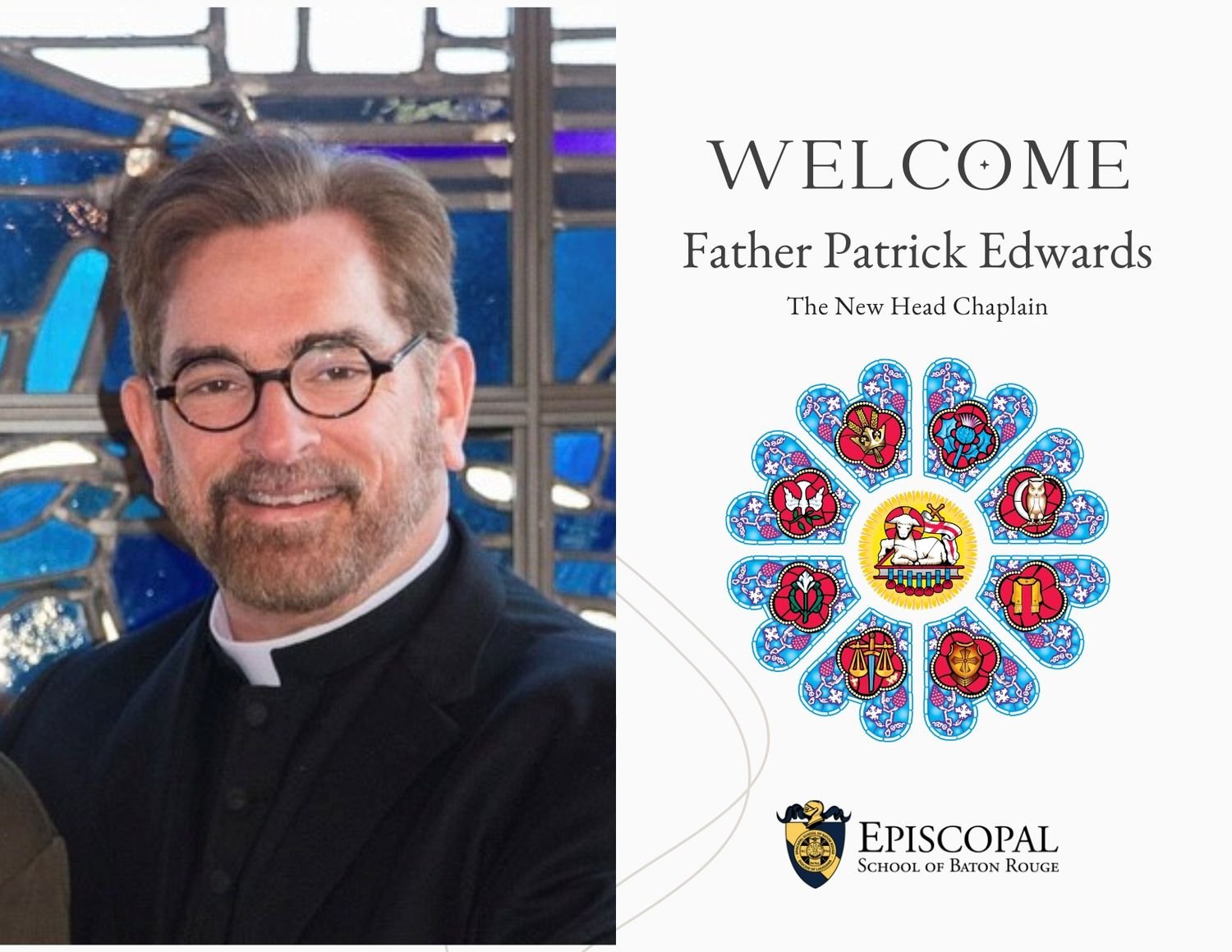 May16Episcopal Welcomes Father Patrick Edwards as New Head Chaplain
May16Episcopal Welcomes Father Patrick Edwards as New Head ChaplainLearn more about new Episcopal Head Chaplain Father Patrick Edwards.
See Details May16Lower School Happenings - May 2024
May16Lower School Happenings - May 2024There's excitement and joy in Lower School as students wrap up the school year. Check out the latest projects.
See Details May16Future Business Leaders Benefit from Spring Lessons/Community Support
May16Future Business Leaders Benefit from Spring Lessons/Community SupportEpiscopal students participated in two real-world learning experiences – the What’s Your Bright Idea? Episcopal Pitch Contest and the annual Burkenroad Reports Investment Conference.
See Details May8College Announcements 5.10.24
May8College Announcements 5.10.24Please join us in congratulating members of the Class of 2024 as they announce their college enrollment decisions.
See Details
Categories
- All
- Admission
- Athletics
- College Bound 2019
- College Bound 2020
- College Bound 2021
- College Bound 2022
- College Bound 2023
- College Bound 2024
- Counselors Corner
- Episcopal Alumni
- Giving
- Head Of School
- Lower School
- Middle School
- Spirituality And Service
- Student Work
- The Teachers' Lounge
- Upper School
- Visual And Performing Arts
Recent Articles
- 05/16/24Episcopal Welcomes Father Patrick Edwards as New Head Chaplain
- 05/16/24Lower School Happenings - May 2024
- 05/16/24Future Business Leaders Benefit from Spring Lessons/Community Support
- 05/8/24College Announcements 5.10.24
- 05/7/24Episcopal's Addisyn Botos Will Continue Track & Field at Southern Miss
- 05/7/24Spring Sports Success!
- 05/3/24Episcopal Audiences Wowed by "The Children of Willesden Lane"
- 05/3/24Service Learning & Community Impact Students Share Thoughts on Earth Day
- 05/2/242024 Mums of Alums Luncheon Draws Large Crowd of Supportive Mums
- 05/2/24College Announcements 5.3.24








